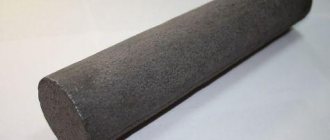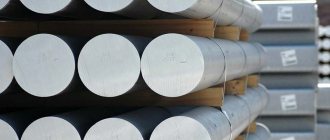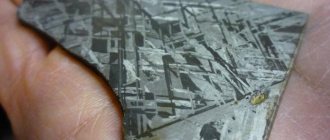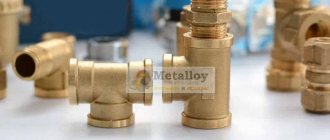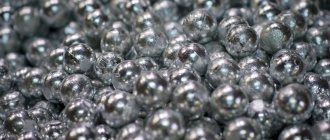History of bronze
Thanks to improvements in the processing of metals such as copper and tin, in 3000 BC. The Bronze Age began. It is characterized by the active production of an alloy such as bronze, which was used for the manufacture of tools and jewelry.
In the modern metallurgical industry, in addition to copper and tin, materials such as aluminum, phosphorus, lead, and zinc are also used. The name itself comes from the Persian word “berenj”, which translates as “copper”.
It is known that the first bronze was made from Cu and arsenic and was called arsenic. However, due to its toxicity, it was very quickly replaced by tin. It is not surprising that blacksmiths were often depicted as ugly and disfigured. In fact, this is what happened. Prolonged contact with arsenic had a very bad effect on their body. For this reason, the alloy of copper and tin is called bronze, since these are the components most often present in it.
History of appearance and application
Brass has been known since the beginning of the new era and was first produced in the Roman Empire, but was also used in India and China. Later, the method of smelting zinc was lost in Europe, so for a long time the metal was imported from Asia. Zinc mining in Europe resumed in the 16th century, and brass smelting began in the 19th century. Thanks to archaeological excavations, it is known that brass was widely used for jewelry, as it has the characteristic yellow color of gold and is called “fake gold.” With the development of metallurgy, the alloy expanded its scope of application, which was ensured by regulating the characteristics of the metal by varying the ratio of its components.
Characteristics of bronze
We all know that a metal like copper is very soft, ductile and absolutely fragile. At the same time, it has very high electrical and thermal conductivity. An alloy of tin and copper is a material that significantly exceeds the characteristics of these chemical elements individually. In other words, bronze has high hardness and strength, but at the same time it is quite fusible.
The discovery of this alloy played a major role in the metallurgical industry. Although many other materials were invented later, even today it is very popular due to its good mechanical properties.
Cuprous ferroalloys
Unlike other cases of joining metals, the basis for alloying is not copper, but iron. Cu + Fe alloy has high porosity.
From the point of view of harvesting copper scrap, cuprous steels are not of interest - the Cu content is in the range of 0.2–0.5%.
But for the remelting of cast iron and ferrous scrap metal, an alloy of iron and copper plays the role of an alloying additive during thermal processing. Due to the addition of Cu, the anti-corrosion properties of steel are improved by 1.5–3 times compared to conventional carbon steel. In powder metallurgy, the following phenomena are observed in relation to cuprous steel :
- Copper increases strength with the simultaneous introduction of 5–6% Cu and 0.3–0.6% carbon. In this case, the plastic properties of the alloy deteriorate.
- Improves the machinability of steel.
- Resistance to atmospheric corrosion increases.
Low-carbon steel with copper is used for lining railway cars and making tanks. The paint on products made of this metal lasts longer.
Bronze's ability to resist corrosion
One of the most important properties of the alloy is its corrosion resistance. This is especially true for those compositions that contain a significant content of manganese and silicon (more than 2%).
It was found that high corrosion resistance manifests itself upon contact of bronze with water (sea and fresh), concentrated alkalis and acids, sulfates and chlorides of light metals, as well as upon contact with dry gases (tin-free bronze).
Of course, in general, the corrosion properties of the alloy depend on the alloying elements. Thus, a high lead content reduces the ability to resist corrosion, while nickel increases this property.
Standards for Copper Alloys
State standards stipulate the rules for marking copper and its alloys, the designation of which corresponds to a certain structure.
The fact that this is one of the copper grades is indicated by the letter “M” in its designation. After the initial letter in the marking of copper and its alloys there are numbers (from 0 to 3), conventionally indicating the mass fraction of the base metal in their composition (for example, M3 copper). The numbers are followed by capital letters, by which you can determine how this grade of copper was obtained. Technological methods for producing copper include the following:
- cathode (k);
- deoxidation method, which assumes a low content of residual phosphorus (p);
- deoxidation method, which assumes a high content of residual phosphorus (f);
- without the use of deoxidizers - oxygen-free (b).
Examples of markings for such grades and copper alloys may look like this: M2p, M1b.
Chemical composition of copper GOST 859-2014
A number of copper grades, distinguished by unique characteristics, are actively used in various industries.
- M0 - this grade is used for the production of conductive elements and for adding to alloys of high purity.
- M1 - this grade is also used to produce current-conducting elements, rolled products of various profiles, bronze, parts for cryogenic equipment, electrodes for welding copper and cast iron, wire and rods (used for welding work under a submerged arc layer and in an environment of inert gases), consumables for performing gas welding of copper parts that do not experience significant loads during operation.
- M2 - this brand allows you to obtain products that are well processed by pressure. M2 copper is also used for cryogenic equipment parts.
- MZ - parts from this grade of metal are produced by the rolling method.
Spatial distribution of copper reserves in Russia
GOST 859-2001, which specified the requirements and characteristics of copper alloys, was replaced in 2014 by a new state standard (859-2014), which was recorded by the relevant Order of the Federal Agency for Technical Regulation and Metrology. The new standard in its main points is almost identical to GOST 859-2001.
GOST 859-2001 on copper grades
This state standard document applies to cast and deformed semi-finished copper products, as well as copper manufactured in the form of cathodes.
Types of bronze
Alloying elements that may be present in this alloy can significantly change its properties, and the type of bronze depends on them. In addition, tin can be replaced by other elements. For example, BrAMTS-7-1 can be deciphered as follows: 92% copper, 7% aluminum, 1% manganese. This grade of bronze does not contain tin and, due to this, has high resistance to alternating loads. It is used for the manufacture of bolts, screws, nuts and parts for hydraulic installations.
Another example is tin cast bronze of the BrO10S10 grade. It contains up to 83% copper, 9% tin, 8% lead and up to 0.1% iron, silicon, phosphorus and aluminum. It is intended for parts that operate under conditions of high specific pressures, for example, for plain bearings.
Although bronze is an alloy of tin and copper, in some cases the chemical element Sn is not used. Another example of tin-free bronze is heat-resistant. For its manufacture, only 98-99% copper and 1-2% cadmium are used. An example would be the BrKd1 brand. This is a heat-resistant cadmium bronze with high heat resistance and electrical conductivity. It can be used for the manufacture of parts for resistance welding machines, electric motor commutators and other parts operating at high temperatures and requiring good electrical conductivity.
Another type of alloy used to make gaskets in automobile bearings and bushings is pressure-processed tin bronze. The alloy of copper and tin contains alloying elements such as lead (4%), zinc (4%), aluminum (0.002%), iron (0.005%). The steel grade is called BrOTsS4-4-4. It is thanks to the percentage of these chemical elements that this alloy can be processed by pressure and cutting. The color of bronze also depends on impurities. So, the less copper the alloy contains, the less pronounced the color: more than 90% is red, up to 80% is yellow, less than 35% is steel gray.
Properties of copper and zinc alloy
There are several types of brass, which are characterized by both general properties and individual ones. Main characteristics:
- metal density - from 8.2 to 8.7 t/m3;
- heat capacity - 380 J/(kg*K);
- electrical resistance - from 0.025 to 0.108 Ohm*sq. Mmm;
- melting point - from 870 to 990 degrees.
Both main elements have a relatively high density. Accordingly, their connection is characterized by high mass. Brass is easily processed by arc welding, but will not respond to gas welding. It oxidizes quickly, so if necessary, the metal is coated with varnish or polished. Zinc provides strength and ductility. The latter can be regulated by zinc content.
Certain properties are imparted by alloying additives, which change the composition of brass and allow its characteristics to be adjusted over a wide range. A feature of the additives is the absence of changes in the specific gravity of the alloy. The addition of magnesium increases strength and anti-corrosion qualities. Nickel reduces oxidation and lead improves ductility. If you add silicon without other additives, the ductility and strength will increase. There are many combinations of zinc, copper and additive ratios that provide the desired performance.
Bronze processing
As mentioned earlier, an alloy of tin and copper is a fairly durable material. It is difficult to sharpen, cut and press. In general, this is a casting material with low shrinkage - about one percent. And even despite its low fluidity and tendency to segregation, bronze is used for the manufacture of castings with complex configurations. Art casting is no exception.
Alloying elements that are added to the tin-copper alloy improve its properties and reduce its price. For example, alloying with lead and phosphorus improves the processing of bronze, and zinc increases its corrosion resistance. For certain purposes, deformed alloys are made. They easily change their appearance using cold forging.
Precious metal alloys[edit]
Copper is often alloyed with precious metals such as gold (Au) and silver (Ag).
| Name | Cu [%] | Au [%] | Ag [%] | Another [%] |
| Auricuprid | † | † | ||
| Ashtadhatu | † | † | † | Fe†, Hg†, Sn†, Zn† |
| Billon | † | † | Hg† | |
| Chinese silver | 58 | 2 | 17.5 Zn, 11.5 Ni, | |
| Corinthian bronze | † | † | † | |
| CuSil | 28 year | 72 | ||
| Dymalloy | 20 | 80 | C (type I diamond) | |
| Electrum, Green Gold | 6-23 | 75-80 | 0-15 | 0-4 cd |
| Gray gold | † | † | Mn† | |
| Guanine | 25 | 56 | 18 | |
| Hepatizon | † | track | track | |
| Niello | † | † | Lead sulfides† | |
| Panchaloha | † | † | † | Fe†, Sn†, Pb†, Zn†, |
| Rose, red and rose gold | 20-50 | 50-75 | 0-5 | |
| Spangold | 18-19 | 76 | 5-6 Al | |
| Shakudo | 90-96 | 4-10 | ||
| Shibuichi | 40-77 | 0-1 | 23-60 | |
| Tibetan silver | † | † | Ni†, Sn† | |
| Tumbaga | 3-97 | 3-97 | ||
| White gold | † | † | Ni†, Zn† |
† amount not specified
Application area
Of course, the use of bronze does not lose its popularity in our time. Souvenir products, decorative interior items, decorations for gates and gates... In addition, the alloy is used for the manufacture of fittings (handles, hinges, locks) and plumbing fixtures (taps, fittings, gaskets, faucets). Bronze also has wide range of uses in industrial applications. Thus, cast alloy is used for the manufacture of bearings, sealing rings, and bushings.
The widespread use of bronze is particularly influenced by its corrosion properties. For this reason, it is used to make parts of mechanisms that operate in constant contact with water. The high elasticity of the alloy makes it possible to make springs and parts of control and measuring equipment from it.
Areas of use of alloys
The annual smelting of the alloy amounts to more than two million tons, while half is made from recycled materials. Depending on the scope of application, brass is divided into:
- wrought - alloys with a zinc content of less than 10%, which provides ductility, pressure treatment, corrosion resistance and a low level of friction with other metals. Characteristic appearance is “gold”;
- foundry - alloys with a zinc content of 20 to 45 percent. Used for casting pipes, wires, angles and other products that will be exposed to aggressive influences. Characterized by ductility, strength and stability;
- automatic, containing lead, which ensures automatic processing of brass products on machines.
Stamping of deformable products is widely used in shipbuilding, mechanical engineering, aviation, as well as decoration and the manufacture of cultural objects. Foundry production provides kilometers of rolled products annually, and automatic production produces screws, bolts, nuts, etc. Making jewelry from brass has been known since antiquity. Brass is used in all spheres of society, and it is impossible to abandon it in the near future.
Bronze remelting
Of course, each alloy has both its pros and cons. Bronze is an alloy that consists of copper and tin, and therefore it withstands any melting. It can be used several times for completely different purposes. On the other hand, if bronze contains a large amount of impurities, such as magnesium, silicon, aluminum, then during remelting the mechanical properties may decrease.
This is due to the fact that alloying elements that improve the characteristics of bronze are oxidized during melting and form refractory oxides, which are located along the boundaries of the crystal lattice. They break the bond between grains, which makes bronze more brittle.
Links[edit]
- British Museum, "Notes on Application" for "Copper Alloy"
- Lyons, William and Plisga, Gary J. (eds.) The Standard Handbook of Petroleum and Natural Gas Engineering
, Elsevier, 2006 - National bronze and metals | Beryllium copper
- Lewis Brass and Company | Copper alloy data
- Cast Copper Alloy C83600 (Ounce Metal) substech.com
- ^ abc Industrial Investment Castings - Franklin Bronze, retrieved September 07, 2009.
- ↑
Brass and Bronze Alloys, archived from the original on August 25, 2009, retrieved September 8, 2009. - UNS C83400, retrieved 2009-09-08.
- UNS C86100, retrieved 2009-09-08.
- UNS C95410, retrieved 2009-09-08.
- UNS C95600, retrieved 2009-09-08.
- UNS C95700, retrieved 2009-09-08.
- UNS C87200, retrieved 2009-09-08.
- UNS C87400, retrieved 2009-09-08.
- UNS C87500, retrieved 2009-09-08.
- UNS C87600, retrieved 2009-09-08.
- UNS C87800, retrieved 2009-09-08.
- UNS C87900, retrieved 2009-09-08.
Bibliography[edit]
- Oberg, Eric; Jones, Franklin D.; Horton, Holbrook L. (1992). Handbook of Machines
(24th ed.). New York: Industrial Press Inc., pp. 501. ISBN. 0-8311-2492-X.
How to distinguish bronze from brass and copper
One of the most common questions is the difference between this alloy and others that are similar in appearance. Of course, this is quite easy to do within industry and with the help of special reagents. But what if you need to determine the material at home?
To begin with, the alloy consists of tin and copper. The percentages of these substances may vary. The more copper, the brighter the color, but due to the tin content in the alloy, it will be an order of magnitude heavier than, for example, pure Cu.
If we compare bronze with brass, the latter has a more yellowish tint. Copper itself is very ductile, but alloys based on it are quite elastic and hard. You can also determine what material is in front of you by heating. Thus, when exposed to high temperatures, brass releases zinc oxide and the product acquires an ashy “patina.” But bronze will not change its properties when heated.
Copper
Soft, ductile metal of pinkish-golden color. Its beauty has attracted people since ancient times, so the first products made from copper were jewelry.
In the presence of oxygen, copper ingots and copper products acquire a reddish-yellow hue due to the formation of a film of oxides. In a humid environment in the presence of carbon dioxide, copper turns greenish.
Copper has high thermal and electrical conductivity, which ensures its use in electrical engineering. Does not change properties over a wide range of temperatures from very low to very high. Not magnetic.
In nature, deposits of copper ore are more often found on the surface than other metals. This allows open-pit mining. Large copper nuggets with high copper purity and copper veins are found. In addition, copper is obtained from the following compounds:
- copper pyrite,
- chalcocite,
- bornite,
- covellin,
- cuprite,
- azurite,
- malachite.
Works of art
Quite often you can find various bronze figurines and figurines. Many works of art were created in ancient times and the Middle Ages.
Alloys containing copper and tin are used for the manufacture of:
- Fences and gates that are not only incredibly beautiful, but also durable.
- Elements of staircase structures.
- Souvenir products and sculptural compositions.
- Decorative lighting fixtures: sconces and chandeliers.
- Items for interior decoration.
In order to cast the required composition, a special model is created from wood, plaster or polymer materials - the so-called molding. The cavities of this figure are filled with clay and removed after casting. After manufacturing, the surface can be covered with gold, a layer of nickel, chromium or silver.
It is very important to note that, as a rule, an alloy of tin and copper without alloying elements is used to make works of art. This is due to the fact that the more such components are present in bronze, the greater its shrinkage, which negatively affects the quality and shape of the product.
Sources of copper for recycling
Saving resources is an important environmental and technological task. Copper is too valuable an element to be thrown away easily. Therefore, when disposing of household devices and appliances (TVs, refrigerators, computer equipment), you need to cut off all copper-containing elements and take them to recycling collection points. Factories must organize a centralized collection of decommissioned power cables and transformers, electric motors, and other copper-containing parts and devices. There is a certain copper content in spoiled fluorescent lamps, which should also be taken into account when recycling.
Copper and copper alloys, mastered by mankind at the very dawn of civilization, remain popular materials in the technological era, the basis of which is iron. Modern industrial production cannot be imagined without the use of non-ferrous metals. In the future, the need for copper and its alloys will only grow, so it is very important to treat these materials sparingly and use them rationally.
Rate this article:
Rating: 0/5 — 0 votes

